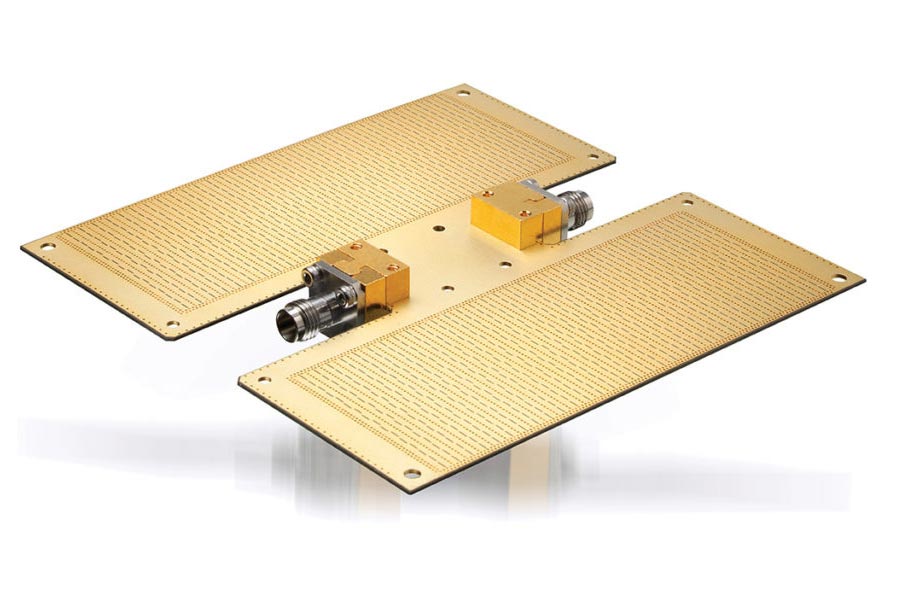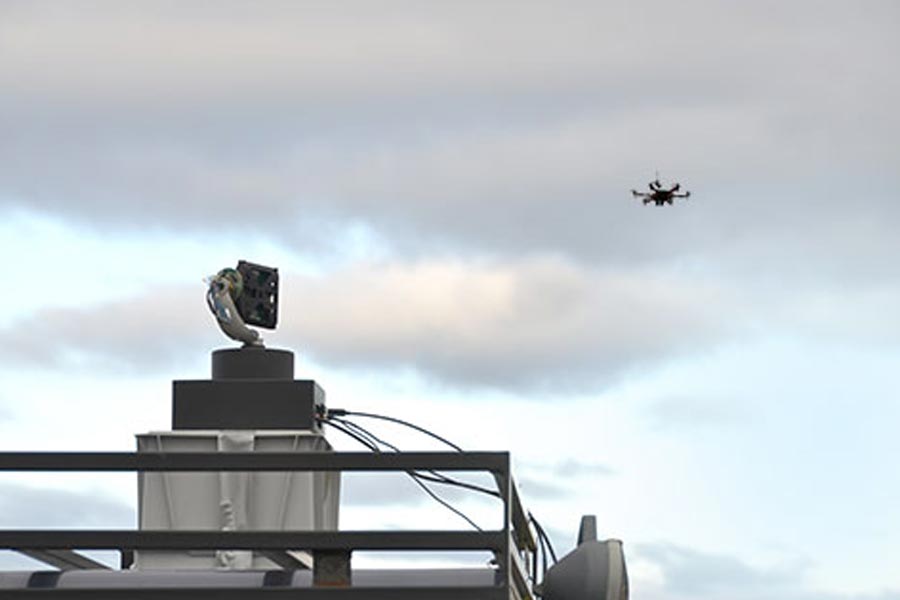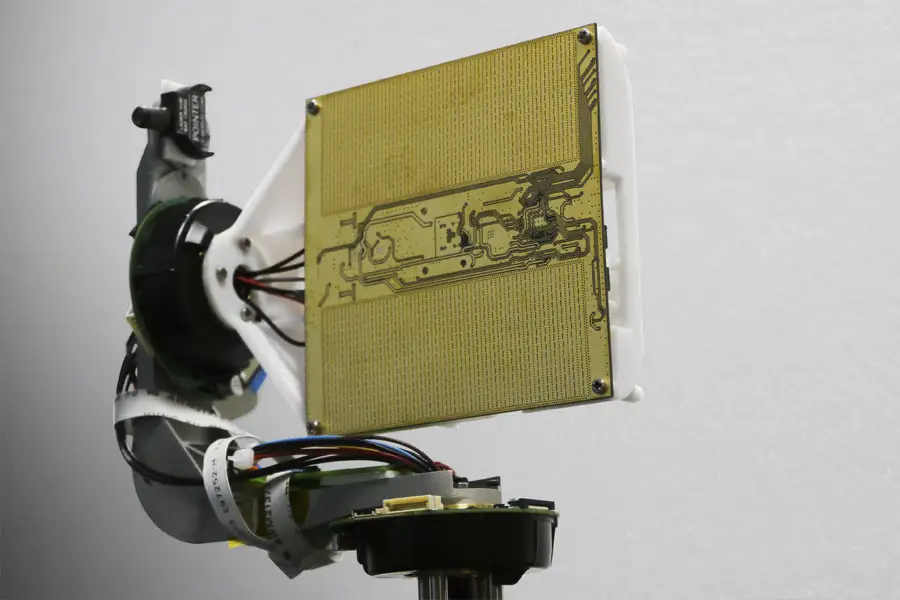The Challenge
Plextek has been working at mm-wave frequencies (above 30 GHz) for some years now. At these extremely high frequencies (EHF), systems often require highly directional antennas that have narrow beamwidths and can be manufactured in a cost-effective manner.
In this project, the antenna forms part of a radar system operating at 60 GHz and the design was taken from initial concept through detailed system performance and design calculations to an integrated, highly manufacturable, single-board radar sensor in just a few months.


The Approach
The novel antenna for the mm-wave radar incorporates Substrate Integrated Waveguide (SIW) technology within a multi-layer, low-loss, microwave laminate. This method involves using the PCB itself to create an enclosed transmission line that can be implemented on the same microwave laminate as the radar transceiver circuitry, thereby yielding a compact design that makes best use of the PCB area.
A corporate-feed network connects the radar transceiver to a multi-element slot array antenna comprising of 32 x 16 slot elements. The aperture is weighted to reduce sidelobe levels, an essential requirement for radar systems. The resulting antenna pattern exhibits a sharp ‘pencil beam’ with high gain and nominal half-power beamwidths of 4° by 9°.
The Approach
The novel antenna for the mm-wave radar incorporates Substrate Integrated Waveguide (SIW) technology within a multi-layer, low-loss, microwave laminate. This method involves using the PCB itself to create an enclosed transmission line that can be implemented on the same microwave laminate as the radar transceiver circuitry, thereby yielding a compact design that makes best use of the PCB area.
A corporate-feed network connects the radar transceiver to a multi-element slot array antenna comprising of 32 x 16 slot elements. The aperture is weighted to reduce sidelobe levels, an essential requirement for radar systems. The resulting antenna pattern exhibits a sharp ‘pencil beam’ with high gain and nominal half-power beamwidths of 4° by 9°.

The Outcome
The complete radar system requires minimal assembly because both transmit and receive antennas are inherently aligned. Trials of the micro-radar system have demonstrated the ability to detect relevant targets at distances up to 100m. Ultimately, a uniquely capable radar sensor having low size, weight and power (SWaP) has been realised.



